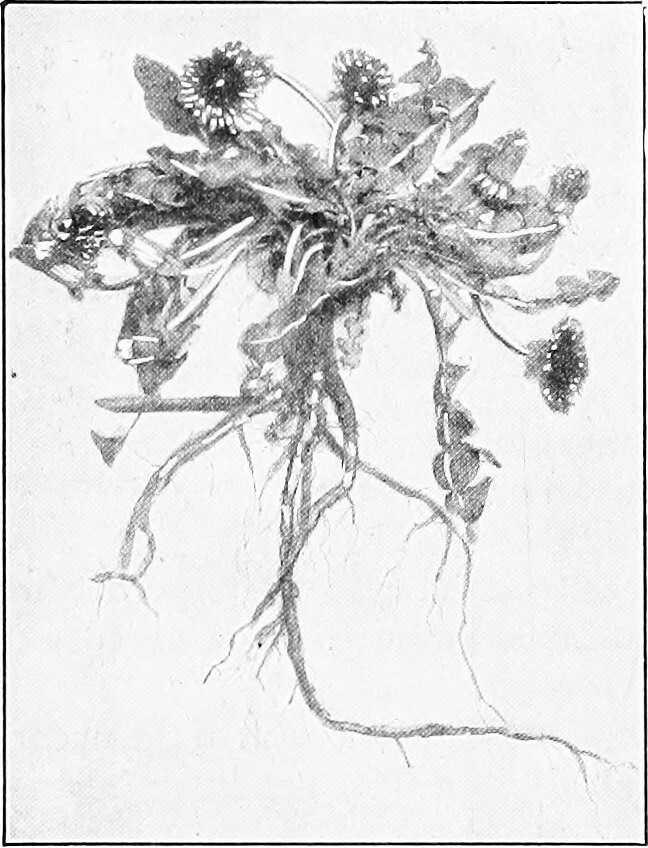
Posted by: Kara Harders, Small Acreage Management Specialist for the Peaks and Plains Region - CSU Extension/NRCS
Weed control is a constant battle but some are easier (in theory) than others. Some of the more difficult weeds to control are those which have a taproot. These weeds readily come back after being mowed, pulled, or eaten because they have enough nutrients stored in their roots to regenerate! There are several tools to consider for controlling weeds organically. No matter what tools are used, it is important to recognize weeds as a symptom of land management. You may control the weeds one season, but if the ground is left uncovered, over grazed, or reintroduced to weeds, your problems will likely return quickly.
Obviously, life would be much easier if the weeds weren’t there to start with. When it comes to organically controlling weeds, proactive strategies will save you far more time and labor than reacting to the weeds once they are present and established. Proactive approaches to weed management include mulching, crop rotations, or cover cropping. These methods all make it difficult for plants to get enough sunlight to grow or become comfortable in their surroundings. They also increase soil health, decrease erosion, and even help with pest problems. Consider adding these methods to your land to help prevent the problem!
If you only have a few of the pesky plants, using a spade to dig out the whole root can be a reasonable approach, especially if the ground is relatively soft. Getting the plants out before they go to seed helps prevent new ones from establishing too. Hand pulling is generally not effective on plants with taproots since they tend to break off leaving the roots safely underground ready to re-grow. This is why goats are less effective on taproot type weeds. If you want to use animals to control weeds, pigs are a more effective choice. Since they plow and root up the soil, they do a better job killing the roots of these weeds.
Occultation is a less known method which helps germinate and kill weeds early in the season. By anchoring heavy tarps (UV-stabilized silage tarps work well) or dark landscape fabric over land you wish to farm, you can increase the temperature of the soil earlier in the spring and cause seeds to germinate earlier. When the plants under the tarp sprout, they have no sunlight and die off. After three to four weeks the weeds should have grown and died, leaving behind a bed of soil ready for planting. If well cared for, the tarps or fabric can be reused many times! A barrier to this method is the tarps can be too heavy, difficult to move, or hard to store depending on your situation.
Flame weeding is another method that can kill weeds from a seed bed after they have germinated. Flame weeding works by burning young plants when their root systems may not be established enough to allow them to recover. It also can knock back a weed population allowing desirable plants seeded shortly after to better compete for sunlight, moisture, and nutrients.
Herbicides can also be a choice in organic agriculture (although are often less effective on established weeds with taproots). In order for an herbicide to be approved for organic use, the active ingredients need to be approved for use by the National Organic Program (NOP). The timing of the application is highly important and multiple applications are often required. One of the more frustrating aspects of organic herbicides is they have broad spectrum effects, essentially, they kill everything they touch. And remember, always read and follow directions on herbicide labels!
Here are some of the more common active ingredients to look for in organic herbicides:
* Vinegar (Acetic Acid) – 5%-30% acetic acid as post-emergent herbicide. It is a post-emergent herbicide used to burn off top growth. Acetic acid is most effective on small annual weeds and less effective on grasses than it is on broadleaf weeds. The more potent horticultural vinegars (above 11%) can cause burns on human skin when exposed to it.
* Herbicidal soaps – fast-acting, broad spectrum herbicides made from fatty acids. They are used as post-emergent and are most effective on annual broadleaf weeds and grasses.
* Clove oil – an active ingredient in post-emergent, non-selective organic herbicides. Research has shown that is can be as effective as acetic acid in controlling broadleaf weeds but at a lower application rate.
* Chelated Iron – These iron products are similar to the iron you would use to fertilize a lawn. However, the iron is bound to a chelating agent making it more available for plant uptake. Broadleaf plants absorb the iron more easily and when the high levels are oxidized it causes the broadleaf weeds to dry up and die quickly. Multiple applications are needed throughout the year and is most effective in lawns. See this document for more information. https://extension.umd.edu/sites/extension.umd.edu/files/_docs/programs/ipmnet/Iron%20Herbicide%20Info-UMD-IPMnet.pdf
If you are looking for more weed management strategies, check out this page. It is a ATTRA publication about proactive and reactive methods which provide an alternative to conventional tillage systems. (https://attra.ncat.org/attra-pub-summaries/?pub=479)

No comments:
Post a Comment